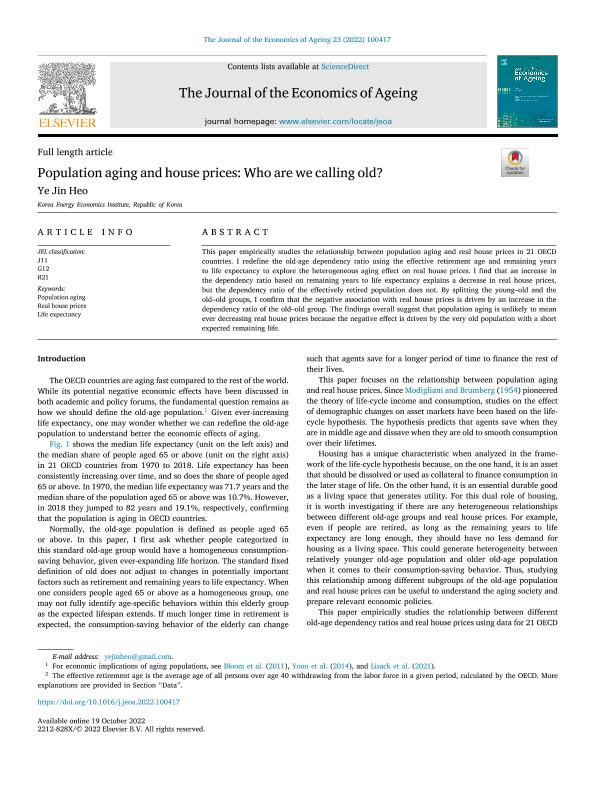Population aging and house prices : Who are we calling old?

Contenido multimedia no disponible por derechos de autor o por acceso restringido. Contacte con la institución para más información.
| Tag | 1 | 2 | Valor |
|---|---|---|---|
| LDR | 00000cab a2200000 4500 | ||
| 001 | MAP20220034623 | ||
| 003 | MAP | ||
| 005 | 20221122160447.0 | ||
| 008 | 221122e20221031esp|||p |0|||b|spa d | ||
| 040 | $aMAP$bspa$dMAP | ||
| 084 | $a931.2 | ||
| 100 | 1 | $0MAPA20220009539$aJin Heo, Ye | |
| 245 | 1 | 0 | $aPopulation aging and house prices$b: Who are we calling old? |
| 520 | $aThis paper empirically studies the relationship between population aging and real house prices in 21 OECD countries. I redefine the old-age dependency ratio using the effective retirement age and remaining years to life expectancy to explore the heterogeneous aging effect on real house prices. I find that an increase in the dependency ratio based on remaining years to life expectancy explains a decrease in real house prices, but the dependency ratio of the effectively retired population does not. By splitting the youngold and the oldold groups, I confirm that the negative association with real house prices is driven by an increase in the dependency ratio of the oldold group. The findings overall suggest that population aging is unlikely to mean ever decreasing real house prices because the negative effect is driven by the very old population with a short expected remaining life. | ||
| 650 | 4 | $0MAPA20080625597$aEnvejecimiento de la población | |
| 650 | 4 | $0MAPA20080552961$aViviendas | |
| 650 | 4 | $0MAPA20100044407$aPersonas mayores | |
| 773 | 0 | $wMAP20210010194$g31/10/2022 Volumen 23 - 2022 , 14 p.$tThe Journal of the economics of ageing $dOxford : Elsevier ScienceDirect, 2021- |

